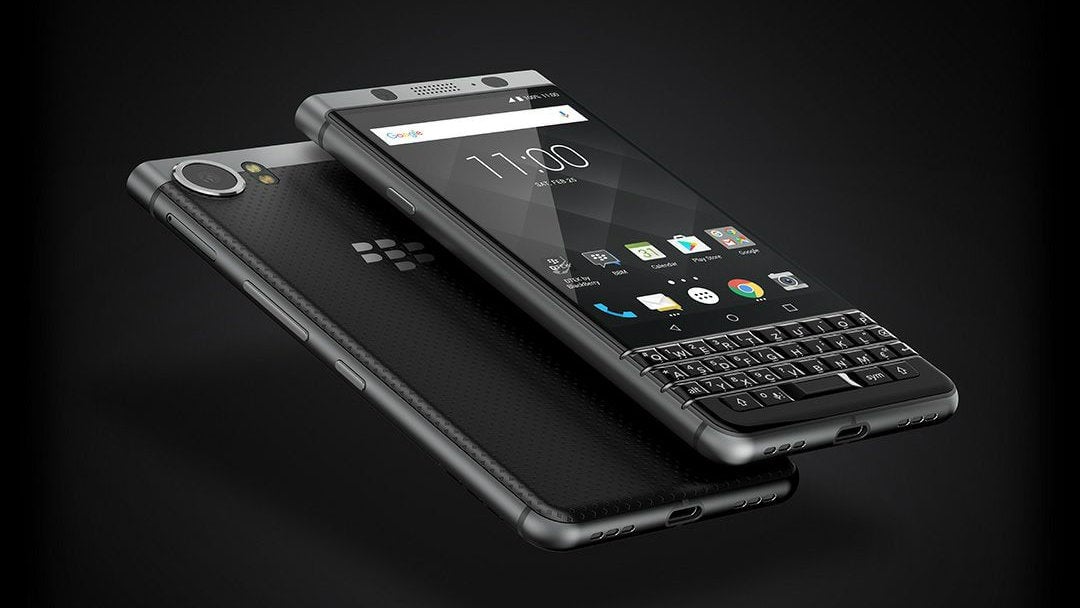A little-known Chinese gadget maker is reviving the Palm and Blackberry brands
Two forgotten handset brands are emerging from the dead. In May, Blackberry made an unexpected return when a device equipped with its signature push-button keyboard hit shelves in North America in May. And yesterday, nerdy gadget bloggers were abuzz over the news that Palm devices may come back into action in 2018.


Two forgotten handset brands are emerging from the dead. In May, Blackberry made an unexpected return when a device equipped with its signature push-button keyboard hit shelves in North America in May. And yesterday, nerdy gadget bloggers were abuzz over the news that Palm devices may come back into action in 2018.
Who is resurrecting these relics of the pre-iPhone era? A little known company from China, which has made a habit of disguising itself behind better-known brands.
TCL, based in a city about an hour from Shenzhen, has been making various consumer electronics for decades. It originated (pdf) as a state-owned enterprise affiliated with the local government of Huizhou that made inexpensive cassette tape players. During the 1980s and 1990s, as China’s economy liberalized, star employee Li Dongsheng took the reigns of the company moved it into the TV set business. The company IPO’d in Shenzhen in 2004, and the government gradually reduced its stake in the business.
Since then, TCL has expanded abroad and into different products—often behind more famous marquees.
In 2003 the company acquired (paywall) the television business of the French electronics maker Thomson, which gave it the rights to sell RCA-branded sets in North America. Later, in 2004, it formed a joint venture with the French network equipment maker Alcatel to make and sell phones under Alcatel’s brand. Alcatel sold its stake to TCL just nine months later (paywall).
TV sets remain an important business for TCL—the company ranks among the top five vendors worldwide. For phones, it’s a bit of a different story. The company sells handsers in China, but it’s dwarfed by domestic giants such as Huawei and BBK, which makes the twin brands Oppo and Vivo.
Globally, however, TCL has eked out a presence under the Alcatel brand, and also by making phones for carriers. In the US, for example, the company provides Android devices for Sprint, T-Mobile, and AT&T. It has 4.8% of the country’s smartphone market share, according Counterpoint Research, and about half the phones it sells in the US come with some form of carrier branding. That means if an American walked into her nearest Verizon shop and bought the cheapest Android phone she could find, there’s a good chance it was made by TCL.
Over the past two years, TCL has snuck behind or snatched up no fewer than three faded handset brands. In January 2015 it purchased the rights to the Palm brand from HP, heralding news of a 2018 revival. In December 2016 it announced it had bought Blackberry’s mobile phone unit, and would assume all design, manufacture, and customer service duties. And in June 2017 the company announced it had struck a $40 million deal to let Vertu, the luxury push-button phone maker, “use advanced and innovative technology from TCL Communication for 30,000 handcrafted Vertu phones.” That announcement came just before news broke that Vertu had liquidated (paywall), and it’s not clear what’s to become of it. TCL did not respond immediately to Quartz’s request for comment.
It’s not clear if reviving dead brands will help TCL improve in the handset business. Apple captures the vast majority of the industry’s profit, while other Android competitors scramble to eat up razor thin margins. Given the already limited appeal Blackberry and Palm have, it’s difficult to see TCL doing much better.
At the same time, other Chinese smartphone makers have struggled to crack the US. Huawei remains boxed out due to weak carrier relationships, which have not been helped by Washington’s public attempts to prevent its networking business from expanding there. Xiaomi has stayed away, likely due to not meeting standards for IP enforcement. BBK has reached Americans with OnePlus, but that brand has only a small following of gadget nerds.
TCL might be only re-animating the zombies of the electronics industry, but at least it has a foot in the door.